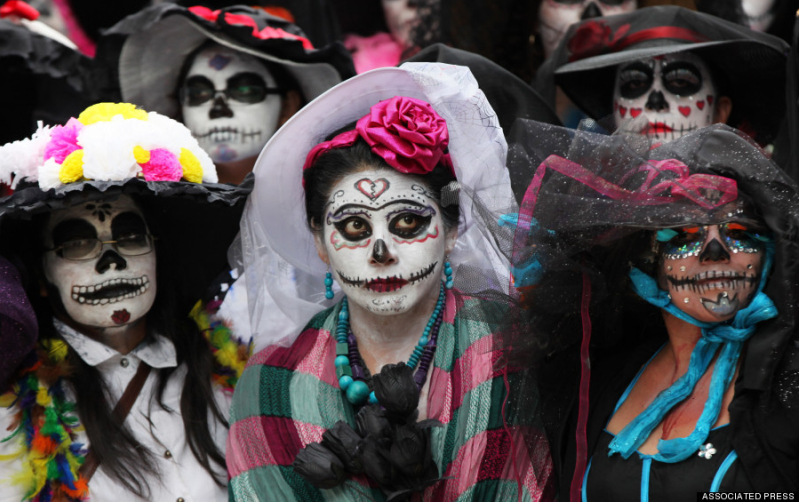
While the general American public celebrated Halloween October 31, Mexico and parts of Central and South America and others of Hispanic heritage prepared to celebrate the Day of the Dead the following two days. From November 1 and into November 2, many of Mexican ancestry continued the tradition of 3,000 to 5,000 years to remember deceased family and friends in various ways. Since the dead are expected to pay a call within those nights, shrines are aptly offered up as vigil. Bedecked with assortments like sweet breads, candied skulls, the dearly departed's favorite foods, and even marigolds---the symbol of dead---these enshrined objects are tangible reminders to the celebrants that death is a part of the sweetness of life, and that the cycle should be savored as holistically.
Beginning as an Aztec ritual to honor the goddess Mictecacihuatl, the Day of the Dead slumbered virtually unknown for centuries, owing to the influence of the Roman Catholicism brought by the Spanish Conquistadors in the late sixteenth century. Until the mid-twentieth century, All Saints' Day served the official replacement for what the church rejected as a pagan holiday. In 1960, Mexico's president re-established the Day of the Dead an official holiday in order to commemorate his people's legacy. Presently, both the Christian and traditional holidays are celebrated in a series of consecutive order, with All Saints' preceding the on October 31, Día de los Inocentes Day, or the Day of the Innocents (recalling infants and children) November 1, and Día de los Difuntos, or Day of the dead (recalling adults), November 2. This mesh of spirituality is notable by the fact that crucifixes are also seen hanging above the altars dedicated to the deceased.
Around 1910, newspaper artist Guadalupe Posada created La Calavera Catrina---or, "elegant skull. " The art form to this day depicts a a female skeleton donning an elaborate hat; though originally intended a mocking symbol of Mexican citizens emulating posh Europeans, the dapper skeleton is now a symbol of the Day of the Dead as female celebrants paint their faces in imitation, sometimes quite elaborately, and dress in Victorian clothing. Men, too join the fun, assuming masculine version of Katrina, and children follow suit.
A stark contrast dividing the seemingly similar times of Halloween and Day of the Dead concern perspective. Whereas Halloween centralizes upon fear surrounding the realm of spirits, the Day of the Dead welcomes them. Particularly, those who have experienced losses within the past year make it a point to receive visitors of all kinds in exchange for wax candles and tamales.
According to local participants, the holiday is undergoing consistent change. Mexico City featured its first Day of the Dead Parade October 29, and resemblance to traditional Halloween rituals appear to be on the increase. Recently, children take to costume and receive gold coins and treats for participation. With the lighted evening streets and all of the bold colors on display everywhere, it is certainly a sight to behold.







